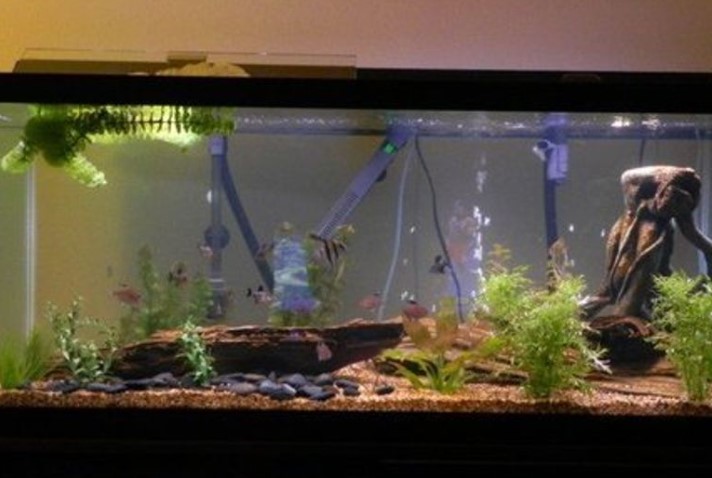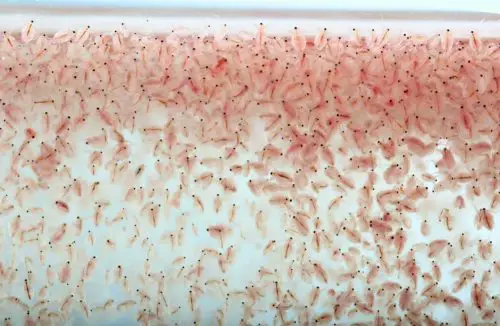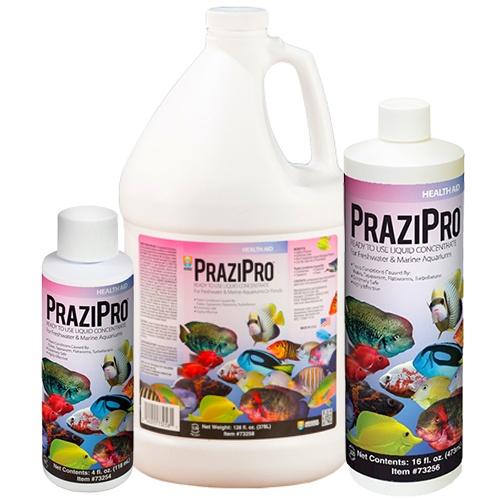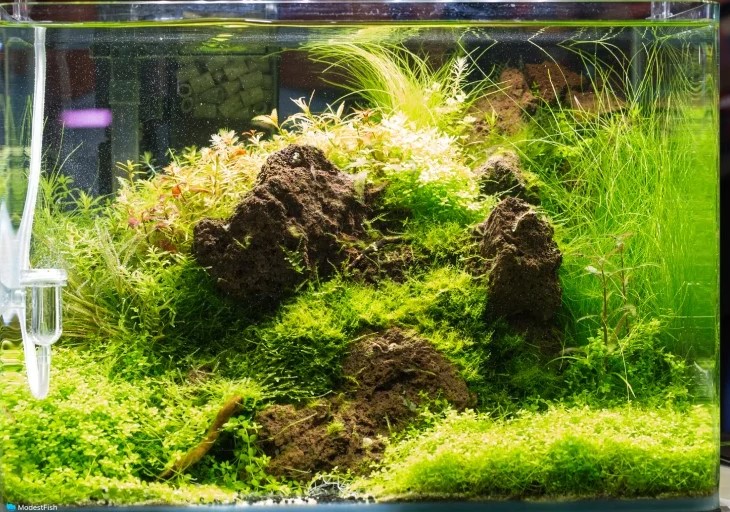Betta Fish Tank Cycling: The Ultimate Guide to a Healthy Habitat.
To properly cycle a betta fish tank, you need to establish beneficial bacteria in the aquarium’s filter media. Betta fish are sensitive to ammonia, nitrite, and nitrate levels, so cycling the tank is crucial for their health.
A betta fish tank is an excellent way to beautify your living space while providing a comfortable home for your fish. However, maintaining a healthy environment for your betta requires proper cycling of the aquarium. When you first set up a fish tank, it does not contain the beneficial bacteria necessary to convert toxic ammonia and nitrite into nitrate.
This process is called cycling and usually takes several weeks. To cycle the betta fish tank, you need to provide a food source for the bacteria and ensure the water parameters are optimum for their growth. In this article, we will discuss the steps to correctly cycle your betta fish tank and the benefits it provides for your fish’s overall health.
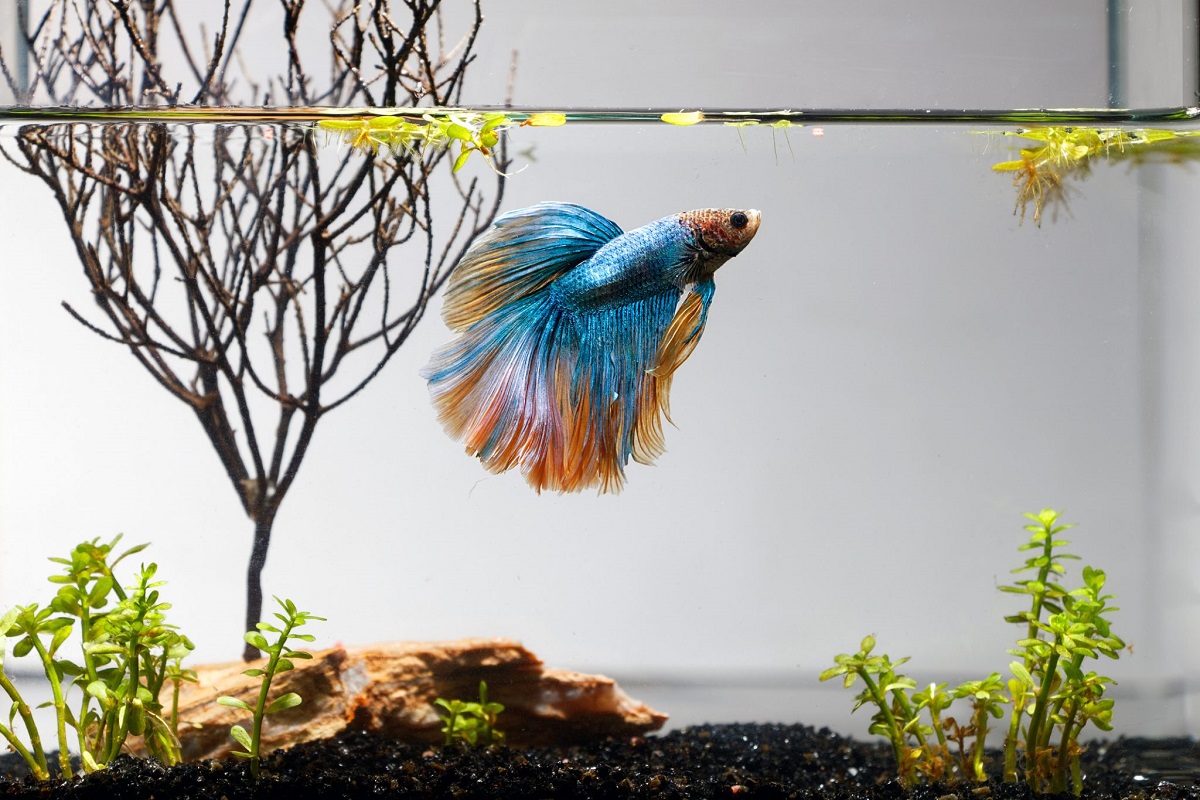
Credit: fishlab.com
Understanding Betta Fish Tank Cycling
What Is Betta Fish Tank Cycling?
Betta fish tank cycling is a vital process that recreates the nitrogen cycle in an aquarium. The nitrogen cycle is the process of breaking down fish waste into nitrates, which is then used by live plants as nutrients. In simple terms, cycling your betta fish tank is the process of establishing the beneficial bacteria that will ensure the health and survival of your betta fish.
This process involves adding live plants or turning on a filter to create a bacteria-friendly environment for your betta to live in.
The Importance Of Cycling Your Betta Fish Tank
Cycling your betta fish tank is critical because it helps prevent harmful ammonia, nitrite, and nitrate levels that can be dangerous for your betta fish. This process also ensures the water quality in your betta fish tank stays clean, preventing any bacteria, parasites, or fungal infections from causing harm to your betta fish.
A healthy betta fish tank cycle provides a stable and comfortable environment for your betta fish to swim, eat, and breathe.
Here are some reasons why it’s important to cycle your betta fish tank:
- Promotes a healthy betta fish tank environment
- Reduces the risk of diseases, parasite infections, and algae growth
- Maintains stable ammonia, nitrite, and nitrate levels
- Increases the lifespan of your betta fish
The Benefits Of A Healthy Betta Fish Tank Cycle
Cycling your betta fish tank has many benefits, but the most important one is ensuring the health and welfare of your betta fish. A healthy betta fish tank cycle means a clean and safe environment for your betta fish to thrive in.
Here are some of the benefits of a healthy betta fish tank cycle:
- Keeps your betta fish happy and comfortable
- Reduces the risk of fish death due to poor water quality
- Helps create a balanced ecosystem in your betta fish tank
- Maintains healthy water parameters for live plants to thrive
- Provides a stable and consistent environment for your betta fish
Cycling your betta fish tank is essential to maintain a healthy and safe environment for your betta fish to live in. With the right equipment and patience, you can establish a healthy betta fish tank cycle that will ensure the longevity and happiness of your beloved betta fish.
Setting Up Your Betta Fish Tank
Betta fish, also known as siamese fighting fish, require specific conditions to thrive, including appropriate tank size, suitable substrates, and the essential equipment. In this section, we’ll delve into the key factors to consider when setting up your betta fish tank.
Choosing The Right Aquarium For Your Betta Fish
Selecting the best aquarium can make a significant difference in your betta fish’s welfare. Here are some key points to keep in mind while choosing the right aquarium:
- It is recommended to have a minimum of 5-gallon tanks for a single betta fish.
- Avoid placing the betta fish in a bowl as it does not provide enough space and suitable conditions for them.
- Betta fish require a filter to keep the water clean and oxygenated.
- The shape of the aquarium, such as rectangular or square, does not affect the betta fish’s wellbeing.
Best Substrates For Your Betta Fish Tank
Substrate is essential, both aesthetically and functionally, as it provides a substrate for beneficial bacteria to grow. Here are some choices of the best substrates for your betta fish tank:
- Gravel is a popular substrate and easy to clean.
- Sand is an option but may require more cleaning due to the accumulation of debris.
- Planted tanks may use soil as a substrate for growing plants.
The Essential Equipment Needed For A Betta Fish Tank
To replicate the betta fish’s natural habitat and maintain their wellbeing, essential equipment is required. Here are some pieces of equipment that you might need:
- Filter: A filter helps to keep the water clean and oxygenated.
- Heater: Betta fish require a consistent temperature between 76 to 82°f.
- Thermometer: A thermometer ensures that the water temperature is within the recommended range.
- Lighting: Betta fish need a light/dark cycle to thrive.
- Fish net: Used to move betta fish from one place to another.
By setting up your betta fish tank correctly, you’re providing an environment for your betta fish to thrive in. By choosing the right aquarium, substrate, and equipment, you’re helping to ensure your betta fish’s wellbeing.
The Nitrogen Cycle Explained
Betta fish are admired for their stunning colors and impressive personalities. To keep these fish healthy and happy, they require a well-cycled aquarium. Cycling a betta fish tank is crucial and helps keep your betta healthy. We’ll dive into the nitrogen cycle and explain it in detail, including how to test and establish it in your betta fish tank.
What Is The Nitrogen Cycle?
The nitrogen cycle is a natural process that occurs in every aquarium. It’s vital for the health of your fish, as it breaks down harmful waste products, such as ammonia, into less toxic compounds. These are then transformed into nitrite and eventually nitrate.
Nitrate is then eliminated through partial water changes.
The Stages Of The Nitrogen Cycle
The nitrogen cycle consists of three stages:
- Ammonia: Ammonia is the first stage of the nitrogen cycle. Ammonia is released into the water by fish waste, uneaten food, and decaying plants. High levels of ammonia are toxic to fish and can cause damage to their gills, eyes, and internal organs.
- Nitrite: Nitrite is the second stage of the nitrogen cycle and is produced as ammonia is broken down by beneficial bacteria, which converts it into nitrite. Nitrite can also be harmful to fish and cause damage to their blood cells, leading to health problems.
- Nitrate: Nitrate is the final stage of the nitrogen cycle and is less toxic than ammonia and nitrite. Nitrate is produced as nitrite is broken down by beneficial bacteria. High levels of nitrate can also harm your fish, so it must be removed through partial water changes.
How To Test For And Establish The Nitrogen Cycle In Your Betta Fish Tank
Establishing the nitrogen cycle in your betta fish tank is essential for their health. Here are some steps you can follow:
- Test the water: You can use a liquid test kit to test the water for ammonia, nitrite, and nitrate levels.
- Add beneficial bacteria: Beneficial bacteria are crucial in breaking down ammonia and nitrite. You can purchase products that contain beneficial bacteria and add them to your tank.
- Avoid overfeeding: Overfeeding your betta fish will result in excess waste, which can cause a spike in ammonia levels.
- Partial water changes: Partial water changes are necessary to remove nitrate from the tank. It’s recommended to change 25% of the tank water every week.
- Patience: Cycling a betta fish tank takes time, and it can take up to six weeks to establish a stable nitrogen cycle.
Understanding the nitrogen cycle is crucial for the overall health and well-being of your betta fish. By following the steps listed above, you can establish a stable nitrogen cycle that will keep your betta healthy and happy.
Maintaining A Healthy Betta Fish Tank Cycle
Betta fish are popular for their vibrant colors and ease of care, but maintaining a healthy fish tank cycle is crucial to their well-being. A well-managed tank provides a stable and healthy environment for your betta to thrive in. In this section, we’ll explore the key points for maintaining a healthy betta fish tank cycle.
Parameters To Monitor For A Healthy Betta Fish Tank Cycle
Maintaining the right water parameters is essential for a healthy betta fish tank. Here are the key parameters to monitor:
- Temperature: Betta fish like warm water, so aim for a temperature between 76-82°f (24-28°c). Use a reliable thermometer to monitor the water temperature regularly.
- Ph level: Betta fish thrive in a ph range between 6.5-7.5, which is slightly acidic to neutral. An aquarium test kit will help you monitor the ph level.
- Ammonia and nitrite: These are toxic compounds that can harm your betta fish. It is recommended to keep ammonia levels below 0.25 ppm and nitrite levels below 0.5 ppm. Test your water regularly to ensure these levels are under control.
- Nitrate: Nitrate levels should be kept below 40 ppm. Regular water changes are an effective way to reduce nitrate levels in the tank.
Common Problems And Solutions For Betta Fish Tank Cycling
While cycling a betta fish tank, several issues may arise. Here are some common problems and their solutions:
- Cloudy water: Cloudy water is often a sign of bacterial bloom that occurs during the cycling process. The best way to solve this is to perform regular partial water changes and clean the tank’s filter. Bacterial supplements can also help to speed up the cycling process.
- Ammonia and nitrite spikes: Spikes in ammonia or nitrite levels can harm your betta fish. Regular water tests can help to detect these spikes, and partial water changes can help to reduce them.
- Algae growth: Algae growth is common in betta fish tanks, especially under high light conditions. To prevent this, reduce the amount of light your tank receives, avoid overfeeding your betta fish, and change the water regularly.
Caring For Your Betta Fish During The Cycling Process
The cycling process can take several weeks to complete, which can be stressful for your betta fish. Here are some tips to help care for your betta during the process:
- Monitor water parameters: Regular water tests can help you monitor the tank’s progress and detect any water parameter imbalances that could harm your betta fish.
- Partial water changes: Regular partial water changes can make your betta fish more comfortable during the cycling process by reducing the ammonia and nitrite levels in the water.
- Avoid overfeeding: Overfeeding your betta fish can lead to excess waste, which can harm the cycling process. Feed your betta fish small amounts of food, two to three times a day.
- Be patient: The cycling process takes time, so be patient and monitor the water parameters regularly. Rushing the process can harm your betta fish and disrupt the tank’s stability.
Maintaining a healthy betta fish tank cycle is essential for your betta’s well-being. Monitoring water parameters, detecting common problems, and caring for your betta during the cycling process can help you achieve a healthy and thriving tank.
Frequently Asked Questions On Betta Fish Tank Cycling
What Is Betta Fish Tank Cycling?
Betta fish tank cycling is the process of establishing beneficial bacteria in your aquarium to help keep your betta fish healthy.
Why Is Betta Fish Tank Cycling Important?
Cycling your betta fish tank is important as it helps to establish a healthy environment for your fish to live in, reducing the chances of disease and illness.
How Long Does Betta Fish Tank Cycling Take?
Betta fish tank cycling can take anywhere from 2-8 weeks, depending on the method used and the specific conditions of your aquarium.
What Are Some Methods For Betta Fish Tank Cycling?
Methods for betta fish tank cycling include the fishless cycle method, using media from an established tank, and adding live plants to your aquarium.
Conclusion
All in all, cycling a betta fish tank is a crucial step in ensuring the health and well-being of your finny friend. The process may seem confusing and time-consuming, but it is an essential prerequisite to maintaining a thriving aquatic environment.
Remember, the nitrification cycle is a natural process that cannot be rushed, so it’s important to be patient and monitor the levels of ammonia, nitrite, and nitrate frequently. Additionally, maintaining a regular water change routine, avoiding overfeeding, and choosing appropriate tank decorations and plants can help create an optimal habitat for your pet betta.
By cycling your tank correctly, you can help your betta fish live a long, happy, and healthy life. So, take the time to properly cycle your tank and enjoy the vibrant beauty of your betta fish for years to come.
